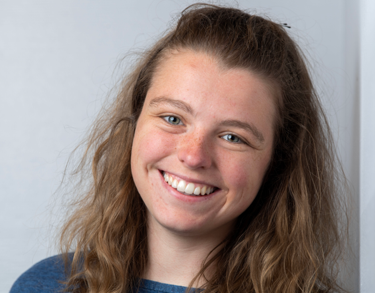Quantum transport in tin telluride nanowire devices
Femke Witmans is a PhD student in the department Nano Electronics. (Co)Promotors are prof.dr.ir. A. Brinkman; prof.dr.ir. F.A. Zwanenburg en dr. J. Ridderbos from the faculty of Electrical Engineering, Mathematics and Computer Science from the University of Twente.
 At the intersection of curiosity-driven fundamental research and the hunt for practical applications lies the field of quantum computation. Quantum computers would solve specialized problems intractable for supercomputers. However, current quantum processors are highly error-prone due to decoherence. Majorana zero modes are a promising platform for fault-tolerant quantum computing, and could be realized by inducing superconductivity in a topological insulator: a class of materials that behave as electrical insulators in the bulk, while having conducting surface states. A specific subclass is the topological crystalline insulator. In this thesis, topological crystalline insulator SnTe nanowires are studied in transport experiments to investigate and characterize their surface states and bulk properties.
At the intersection of curiosity-driven fundamental research and the hunt for practical applications lies the field of quantum computation. Quantum computers would solve specialized problems intractable for supercomputers. However, current quantum processors are highly error-prone due to decoherence. Majorana zero modes are a promising platform for fault-tolerant quantum computing, and could be realized by inducing superconductivity in a topological insulator: a class of materials that behave as electrical insulators in the bulk, while having conducting surface states. A specific subclass is the topological crystalline insulator. In this thesis, topological crystalline insulator SnTe nanowires are studied in transport experiments to investigate and characterize their surface states and bulk properties.
The small diameter of SnTe nanowires complicates Hall device fabrication, and high bulk carrier density, due to spontaneous Sn vacancies, limits the effectiveness of field-effect transistor configurations. This thesis presents the successful fabrication of Hall configuration nanowire devices to determine the carrier density. Despite the high carrier density, quantum transport phenomena are observed, among which Fabry-Pérot oscillations. Supported by a model, we attribute the Fabry-Pérot oscillations to ballistic 2D surface state transport. These specific devices also exhibit resistance variations in a parallel magnetic field, indicative of Aharonov-Bohm-type transport due to the surface states in the nanowires. Finally, we investigate Josephson junctions to understand SnTe properties in the superconducting regime, including the critical current behavior as a function of magnetic field and temperature and the skewed current-phase relation.
The ability to push the limits of nanostructured devices in combination with the obtained knowledge on SnTe opens new device architectures. We provide an outlook on an alternative device structure to detect Majorana zero modes, employing the high carrier density as an advantage instead of a challenge. While SnTe nanowires may not have immediate practical applications, their study contributes to curiosity-driven exploration of topological phases.





